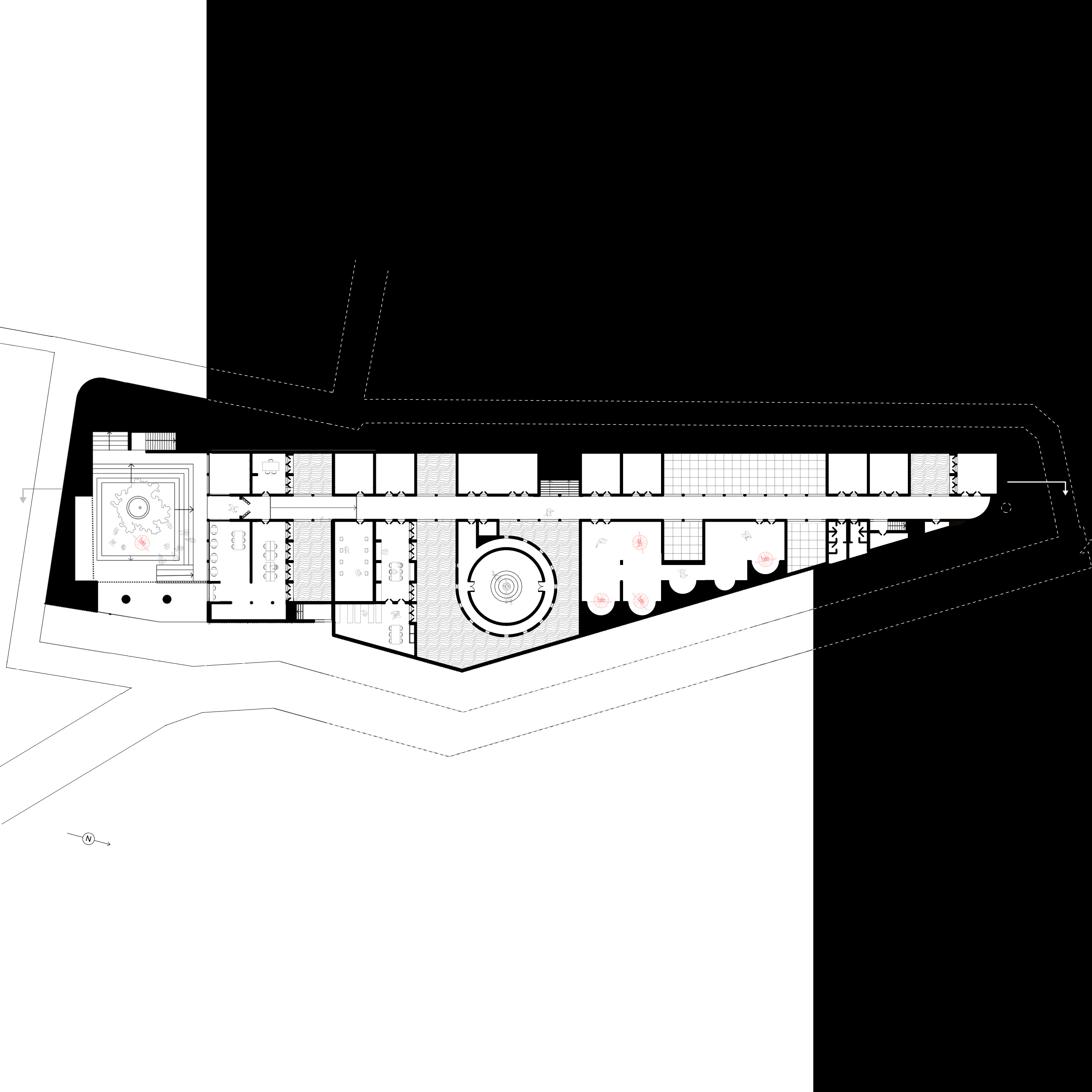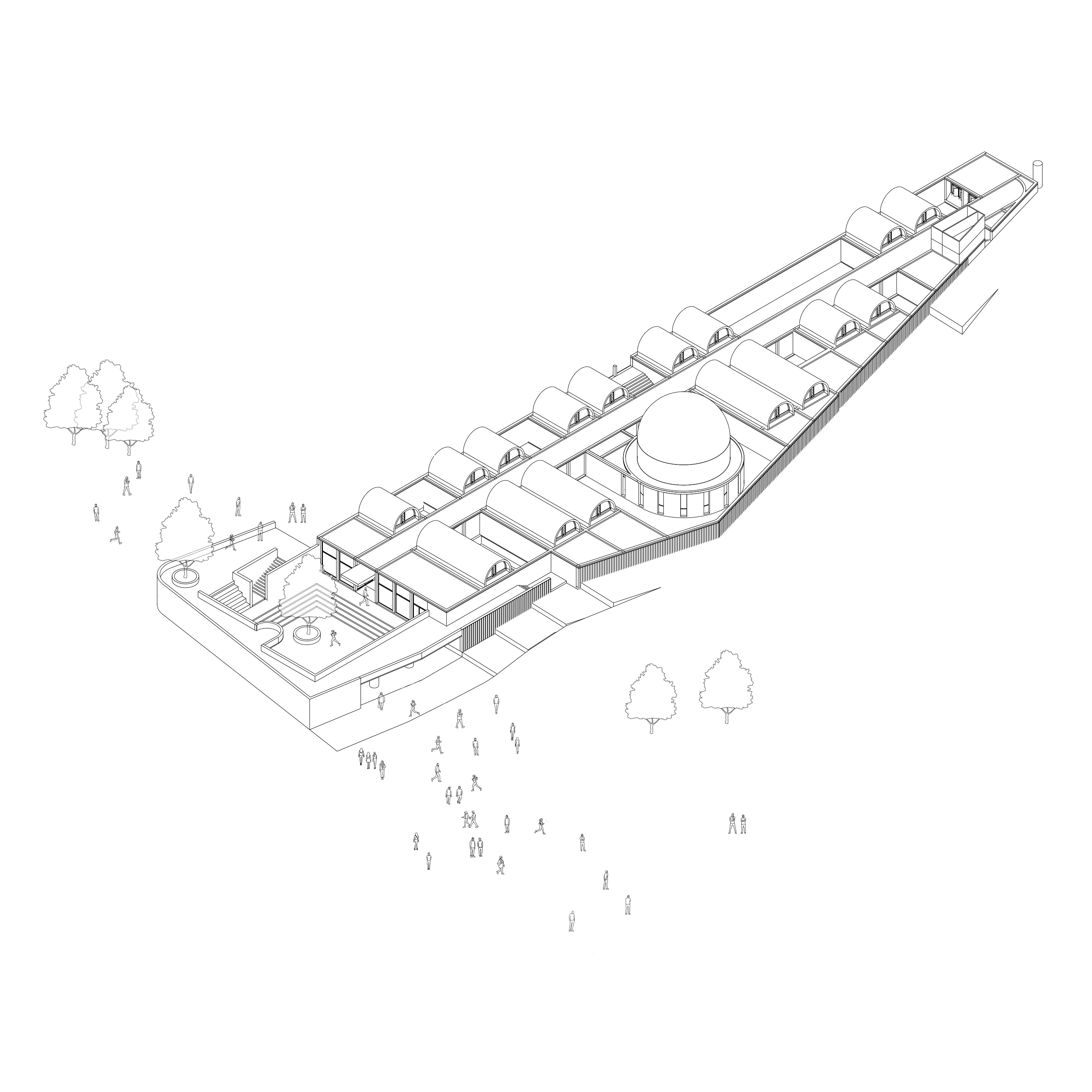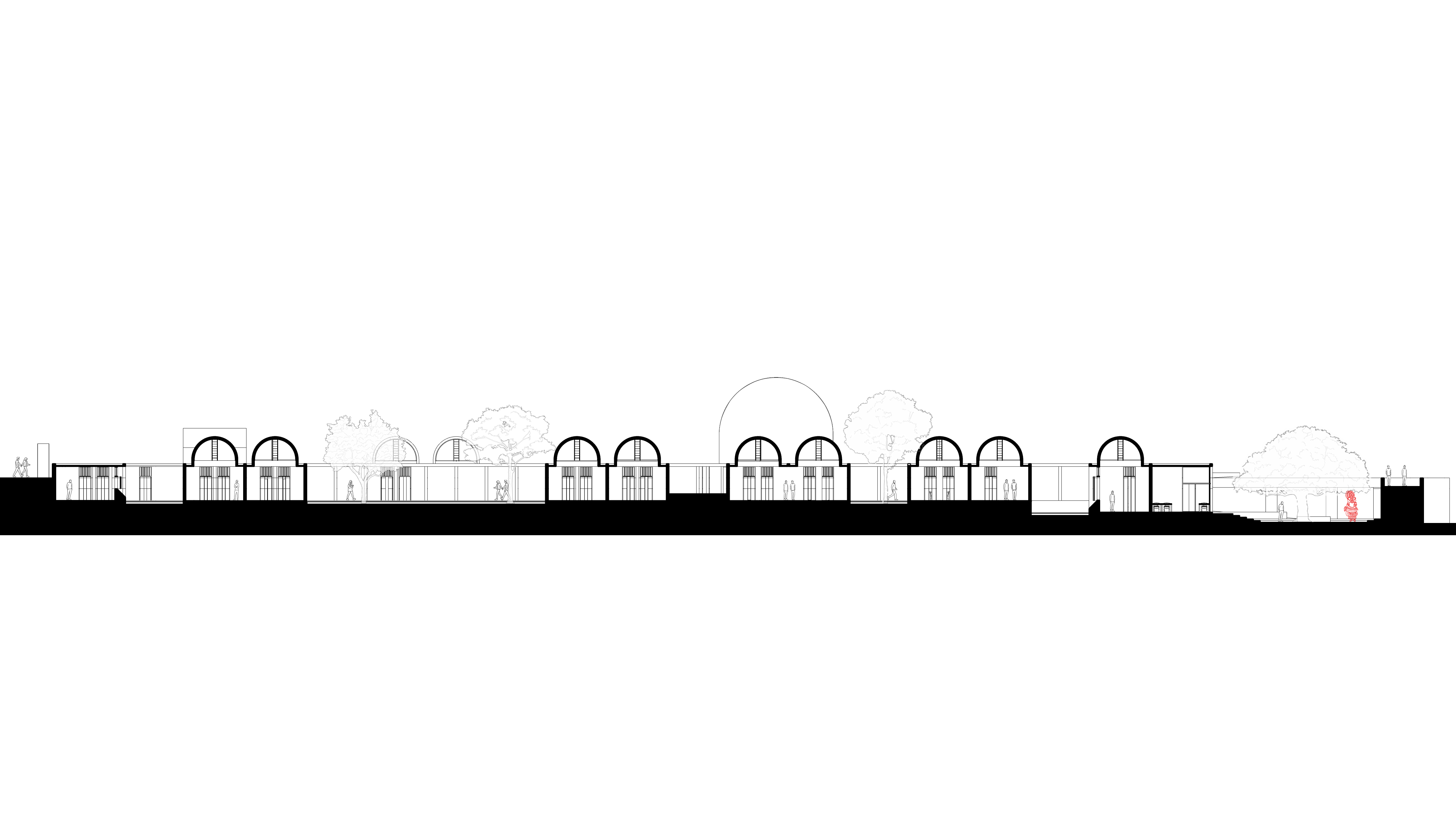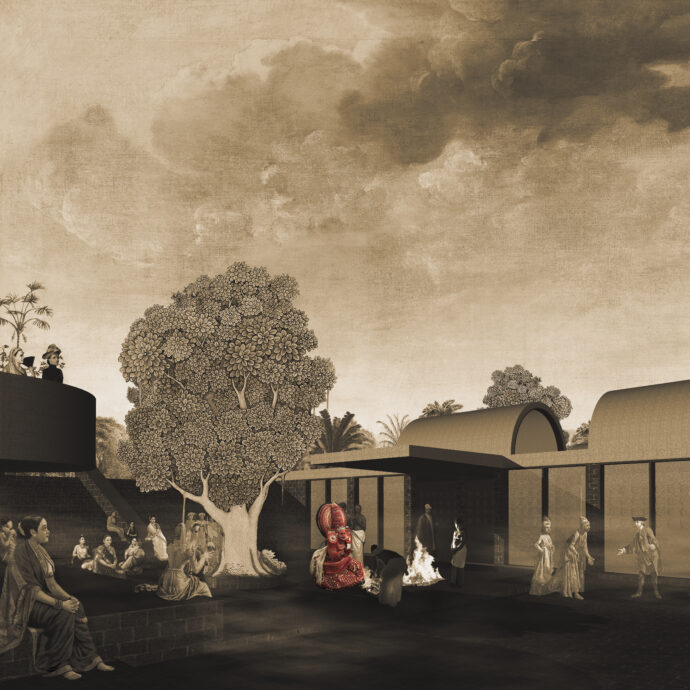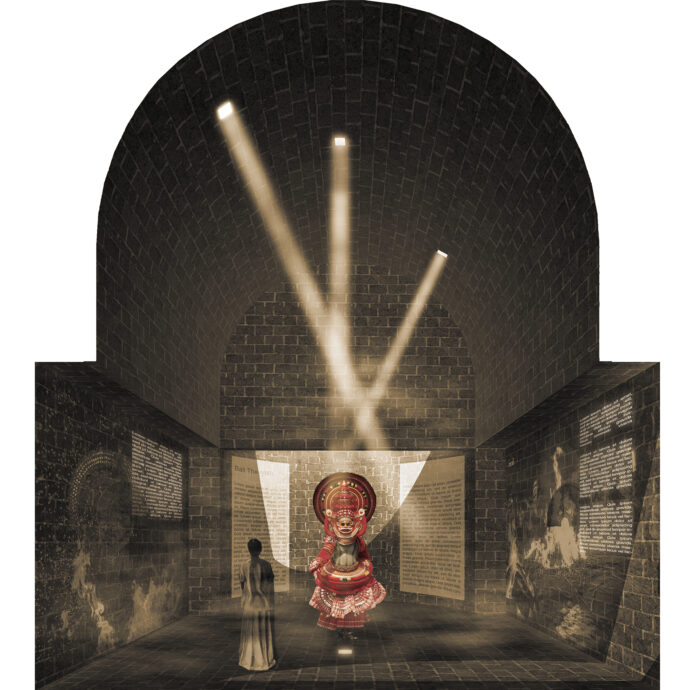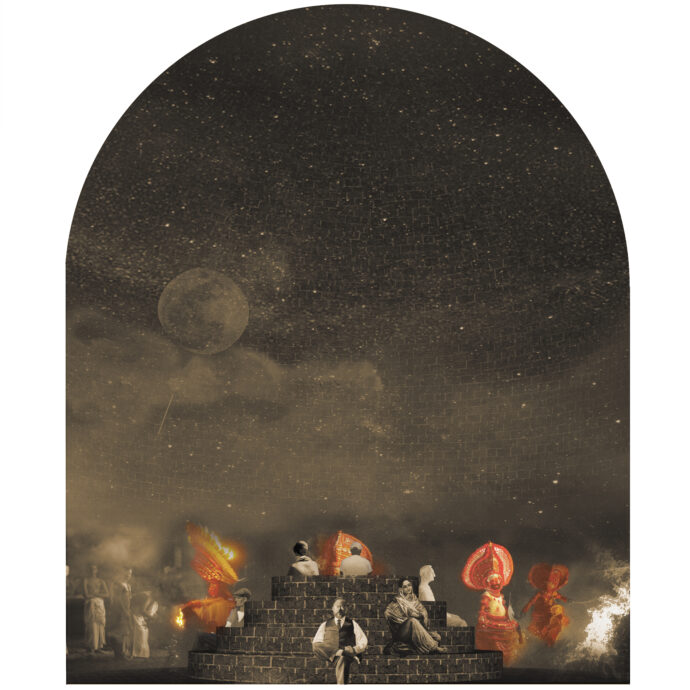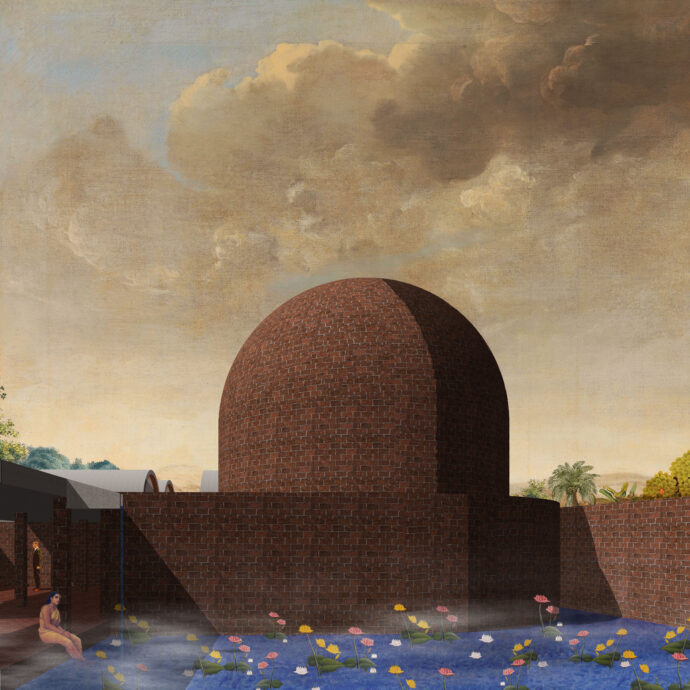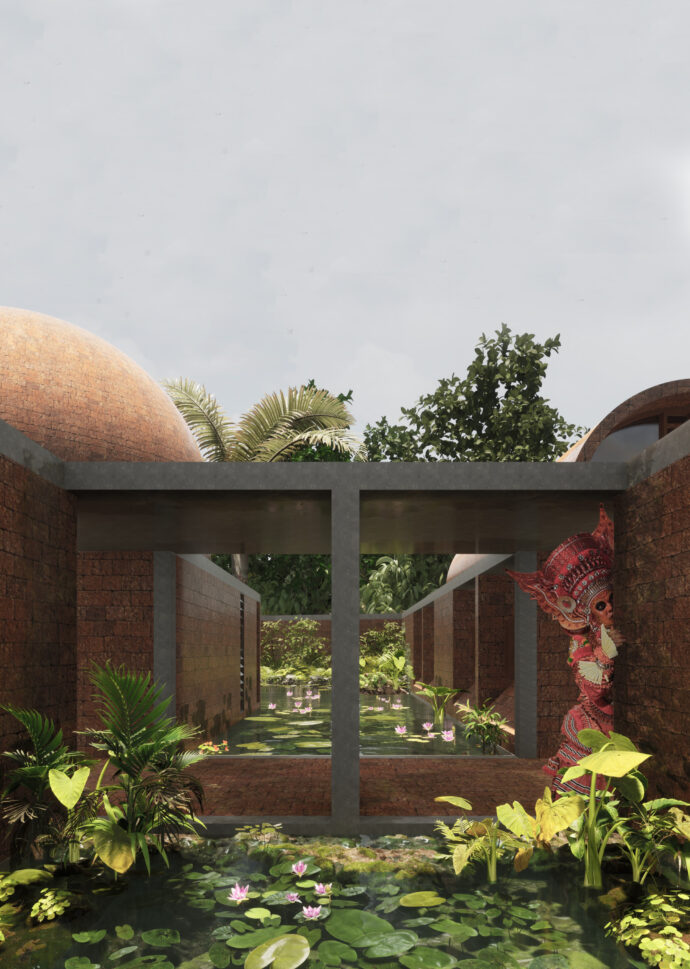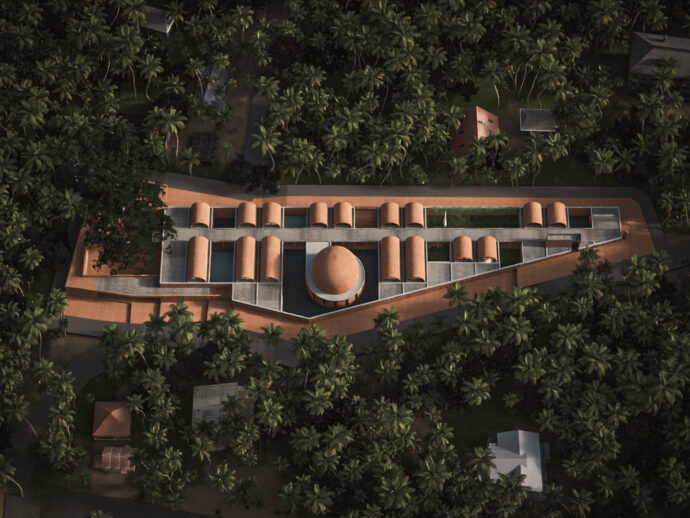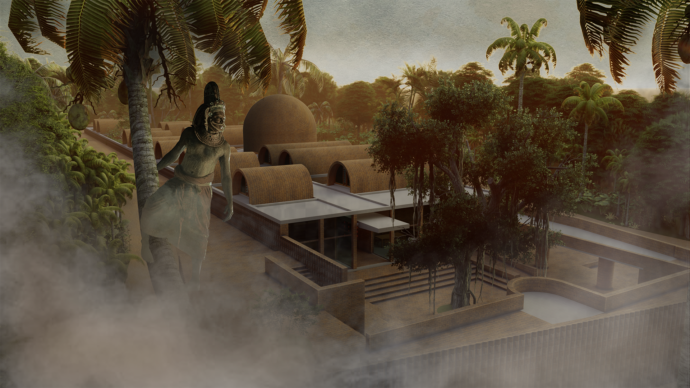067
Theyyam Heritage Conservation Center
Year: 2020
Location: Kannur, Kerala
Type: Public, Assembly
Status: Ongoing
Area: 15,000 sqft
Client: Government of Kerala
Collaborator(s): QUERN
Design Team:
Madhushitha CA, Lijo John Mathew, Adersh UT
Award: Finalist-World Architecture Festival 2024, IIA National Awards 2022 (2023), IIA State Awards 2022
While we accept that images sometimes run the risk of being the only physical imprint of a project, we regard the role of drawing to make one’s gaze more receptive to multiple interpretations, versions and environments. Through a process of collaging, spaces, objects, landscapes, actors move between reality and a fictional world where projects are sometimes conceived or steered onto new paths. We found resonances of this ideology in Tatiana Bilbao’s philosophy of collaging, sharing and the collective. She believes that collaging not only accepts mistakes, multiplicities and possibilities but also allows the mind to evolve through the process.
This process was particularly impactful while designing the Theyyam Heritage Conservation Centre. Theyyam is one of the most enigmatic and awe-inspiring rituals practised largely in the Malabar region of Kerala. An article published by The Hindu (March 2, 2019), observed that with increasing threats to the environment by our contemporary way of life, Kerala’s sacred groves (where this pantheistic art form originated) are disappearing, and with it, a vital link between Theyyam and nature. Thus a call was made for the making of a built form to conserve the heritage and knowledge of Theyyam for the public as well as a research centre for scholars who wish to do serious research on the topic.
The historical place of ‘Kolathunadu’ in Kannur, which is widely regarded as the birthplace of Theyyam by scholars, is the chosen destination for the project. Kannur is also known for the abundance and use of the natural red sandstone called ‘Laterite’ for primal built forms such as temples, step wells, and traditional houses. What interests us about the material is that it comes from the landscape and therefore merges with it over time, thus imparting a sense of mono-materiality like that seen in caves.
The built and unbuilt landscape of Kannur served as a source of inspiration for us to conceive the Theyyam Heritage Conservation Centre. Both spiritual and sensual perceptions of the act of Theyyam helped us seek out the essence of a space that helps create moments of epiphany; similar to the ones experienced by the participants in a Theyyam ritual. We agreed that a museum dedicated to such a ritual must not be confined within conventional white walls and instead absorb all the nuances the land has to offer. The site is a narrow strip of land with little vegetation and a gentle slope. The building is buried within the land to assimilate with the context. Primal building forms of laterite vaults and a dome emerge at regular intervals perpendicularly flanking either side of the connecting axis/corridor. The resulting structure is a series of solids and voids. At the front emerges the space for performance and public gathering and at the opposite end a ‘cylindrical marker’ which, along with the vaults and dome, completes a lexicon of architecture expressing its relationship to the site.
